Woke up early and made coffee to enjoy in my room.
Drank more coffee with breakfast (tipico again)
Morning's lecture was on...coffee. We covered the history of coffee cultivation in Costa Rica over the past two centuries. I love history and so drank it up. Naturally, a lot of Costa Rican social and economic history was stirred in. In an effort after independence (1821) to quickly ramp up production of the lucrative cash crop, landless peasants were given title to forest lands they cleared and grew coffee on. This created a broad middle class--quite unlike the situation in the rest of Central America. We also learned about the railroad from San Jose to Limon in the 1890s and how that changed the cultural mix of Costa Rica by bringing in a Caribbean influence. In the 19th century, coffee farmer coops spread as a form on non-governmental participatory democracy. These eventually (late 20th century) proved unable to continue providing a middle-income livelihood for coffee farmers. Many sold their farms; a few went into direct internet sales and a few developed agrotourism ventures in Monteverde. We went to visit the most successful of these, Don Juan's Coffee Tour.
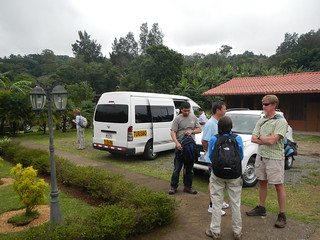
I got into the spirit of the enterprise by jumping into the back of an ornately painted ox cart like those used before the railway to haul coffee to the Pacific port of Puntarenas:
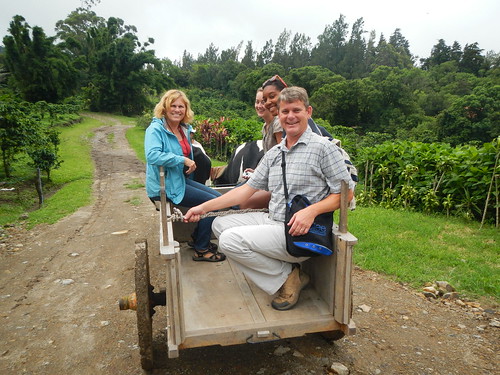
The oxen were very good about the whole thing:
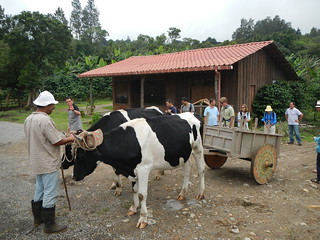
We were there of course to learn about coffee:
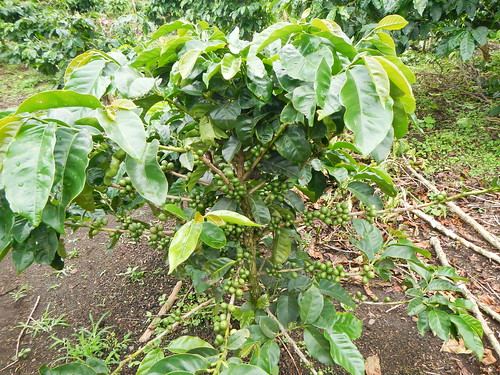
Starting with how it is grown:
How the harvested fruits are de-pulped with machines old and new:
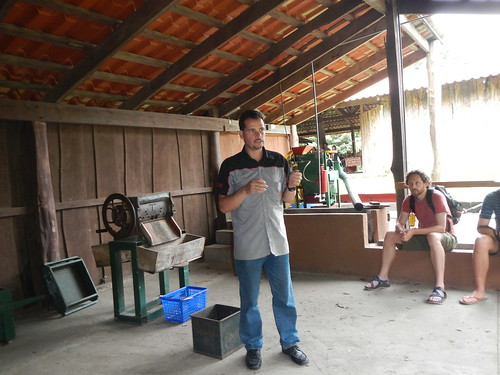
Dried to 12% moisture:
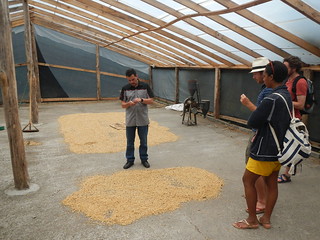
and then roasted. Eventually, we got to taste coffee (and chocolate!) under the eye of Don Juan himself, born in the local area in 1937. He is the gentleman on the right in a hat:
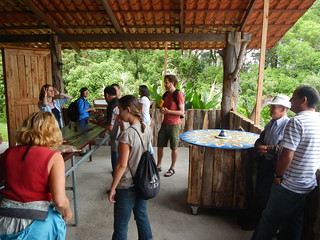
Our wonderfully funny tour guide, Junior, also showed us how sugar cane used to be pressed manually:

All in all, it served as a great example of agrotourism: how farmers are diversifying to generate additional income by educating and entertaining tourists about an agrarian way of life past and present.
After this, we drove into town for lunch (casado con pescado for me) at the Blue Morpho, a restaurant in Santa Elena catering primarily to tourists.
The group split up at this point. Half went to a coffee cooperative to learn more about the economics of coffee under globalization, while three of us went to tour the University of Georgia's Costa Rica campus in the town of San Luis, in the western foothills of the Monteverde cloud forest.
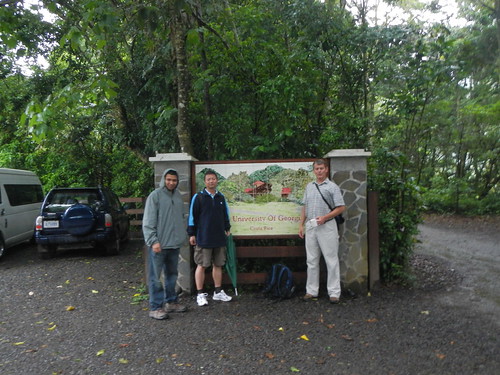
This fine facility can be thought of as "educational tourism" in that it hosts hundreds of US university students annually who learn about the local environment through experiences similar to those of tourists: hikes in the forest, horse rides, home stays, farm visits, etc. Interesting.
When we got back to the Hotel,
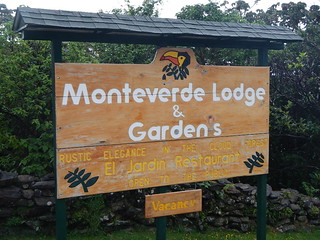
I walked into the town of Santa Elena

to see the development of commerce catering to tourists. I used an ATM machine to get colones, but did not stay to shop. It was raining and getting dark so I walked back to the hotel.
At dinner, we again talked about a variety of subjects, such as favorite musical artists. The longest discussion was on teaching methods to engage students. We are all from different disciplines and institutions but encounter similar challenges. It was a very productive talk, and I am sure we will all try new teaching methods in response to our reflections on the chat.
Tomorrow is our last full day together so it was also a little bittersweet.
No comments:
Post a Comment